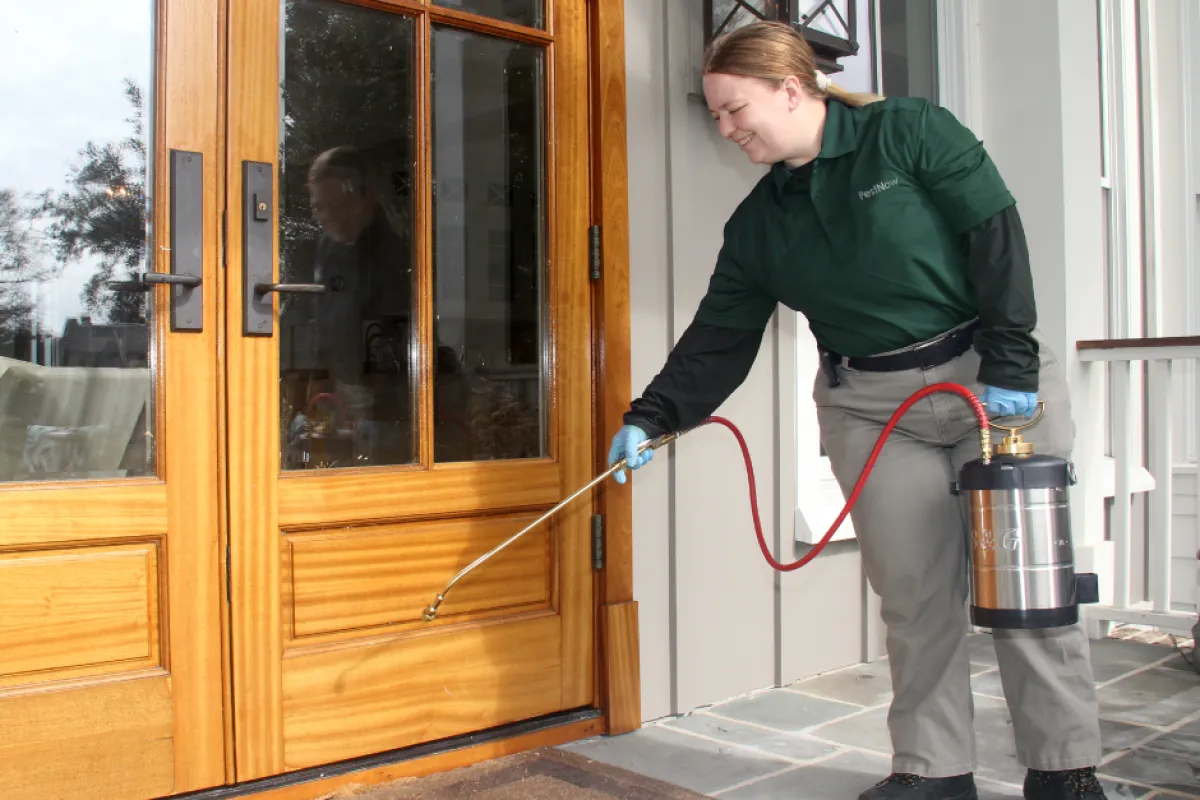Reputable A1 Bed Bug Exterminator Charlotte - Eliminate Bed Bugs Fast
Reputable A1 Bed Bug Exterminator Charlotte - Eliminate Bed Bugs Fast
Blog Article
Bed Insect Treatment Breakdown: Contrasting Chemical Vs. Non-Chemical Solutions
In the realm of insect control, especially when dealing with the consistent problem of bed pests, the choice in between chemical and non-chemical therapy options can be a pivotal one. Both methods offer distinctive advantages and downsides, affecting factors such as effectiveness, safety and security factors to consider, and total price. By checking out the nuanced details of each method, a clearer understanding of which path to pursue in addressing a bed insect infestation can be acquired.
Efficiency of Chemical Treatments
Chemical treatments for bed pest infestations have been widely acknowledged for their potent and quick efficiency in eliminating these pests. When taking into consideration the effectiveness of chemical treatments, it is important to understand that they can offer a fast and comprehensive solution to a bed bug issue.
Additionally, chemical therapies have the benefit of providing residual results, suggesting that they can remain to remove bed bugs even after the preliminary application. This residual activity is specifically beneficial in combating any potential re-infestations. Furthermore, the rapid activity of chemical treatments can bring alleviation to individuals encountering severe bed pest infestations, enabling them to reclaim control of their living rooms promptly.
Safety And Security Problems With Chemical Solutions
One crucial aspect that calls for cautious factor to consider when utilizing chemical solutions for bed bug treatment is making certain the security of residents and the environment. Direct exposure to specific chemicals made use of in bed bug treatments can lead to breathing issues, skin irritability, or various other negative responses, specifically in people with pre-existing conditions or sensitivities.
Furthermore, the environmental impact of chemical services is one more considerable consideration. Some chemicals made use of in bed insect therapies may be harmful to advantageous bugs, wild animals, and communities if they seep into the soil or water supply. It is essential to make use of chemical therapies judiciously, complying with security guidelines, and taking into consideration much less poisonous choices to minimize these risks and ensure the reliable and risk-free administration of bed pest infestations.
Benefits of Non-Chemical Strategies
Thinking about the prospective safety and security issues and ecological effect linked with chemical remedies for bed bug therapy, checking out non-chemical approaches presents a promising alternative with a number of distinctive benefits. Non-chemical techniques offer a much safer option for homes, especially those with children, family pets, or individuals conscious harsh chemicals. These strategies get rid of the dangers of direct exposure to hazardous compounds, minimizing the capacity for negative wellness effects. Moreover, non-chemical treatments are eco friendly, as they do not add to air or water pollution, making them a sustainable choice for parasite control.
In addition, non-chemical remedies can be reliable in targeting bed bugs, including hard-to-reach locations where chemical treatments may not permeate. Methods such as heat treatment, vacuuming, heavy steam cleansing, and mattress encasements provide complete eradication without the usage of unsafe chemicals. Additionally, non-chemical methods can be less disruptive, requiring marginal prep work and enabling for quicker reentry right into dealt with areas. In general, selecting non-chemical bed pest treatment approaches not just focuses on safety and security and environmental management but additionally ensures effective and thorough insect control.
Limitations of Non-Chemical Treatments

Additionally, non-chemical therapies typically require several applications to attain effective removal. This can be lengthy and might not constantly ensure complete removal of all bed pests and their eggs, especially in surprise or hard-to-reach areas.
Furthermore, the success of non-chemical therapies greatly counts on correct implementation and thoroughness, which can be testing for people without specialist experience. Poor application of non-chemical methods may cause incomplete eradication, resulting in persistent infestations and the demand for added therapies.
For that reason, while non-chemical therapies have their benefits, it is necessary to acknowledge these restrictions and consider them when determining one of the most efficient method for managing bed insect infestations.
Price Comparison: Chemical Vs. Non-Chemical Options
Given the limitations connected with non-chemical therapies, a necessary aspect to review in the context of bed bug administration is the cost contrast between chemical and non-chemical alternatives. Chemical treatments usually include the application of pesticides by experts, which can vary from $250 to $900 per space, click to investigate depending upon the extent of the infestation and the size of the area to be dealt with. On the other hand, non-chemical therapies like warm therapy or steam can be extra costly, with prices varying from $1,000 to $6,000 for an entire home. While the preliminary price of chemical therapies may appear lower, multiple therapies might be called for to completely get rid of the problem, possibly boosting the general price. On the other hand, non-chemical choices may supply a much more sustainable and environment-friendly option, although they can be cost-prohibitive for some individuals. Ultimately, when considering the cost of bed pest therapy alternatives, it is vital to consider the upfront costs versus the performance and long-lasting sustainability of the picked technique.
Final Thought

Taking into consideration the potential security problems and environmental influence connected with chemical remedies for bed insect therapy, exploring non-chemical techniques getting rid of rats offers an encouraging alternative with several unique advantages.Given the restrictions linked with non-chemical therapies, an essential element to review in the context of bed insect management is the expense contrast in between chemical and non-chemical alternatives. In contrast, non-chemical therapies like warm therapy or heavy steam can be much more costly, with expenses varying from $1,000 to $6,000 for an entire home. While the initial cost of chemical treatments may appear reduced, multiple therapies might be needed to totally remove the problem, possibly enhancing the total expense.In final thought, when contrasting chemical and non-chemical bed insect treatment alternatives, it is necessary to consider efficiency, security, benefits, restrictions, and price.
Report this page